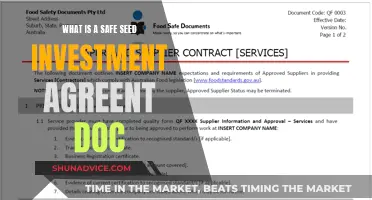
Relationship managers are responsible for maintaining and strengthening customer relationships, acting as a skilled conductor between a business and its clients. They are the experts at building long-lasting, successful relationships that keep companies doing well. To do this, they need a variety of skills, from communication and interpersonal skills to the ability to think on their feet and problem-solve.
Interviewers will want to know how you handle difficult conversations, resolve issues, and build relationships with clients. They will also want to know how you identify and acquire new clients, and how you evaluate their financial needs.
In this article, we will explore some of the most common questions asked during relationship manager interviews and provide sample answers to help you prepare your own responses.
| Characteristics | Values |
|---|---|
| Building and maintaining relationships with clients | Actively listening to clients' needs and concerns |
| Providing excellent customer service | Providing timely responses and solutions to issues |
| Handling difficult conversations and conflict resolution | Empathising with clients and offering tailored solutions |
| Understanding the client's business and industry trends | Staying up to date with industry publications, webinars, conferences and associations |
| Prioritising clients and managing workload | Evaluating clients' revenue potential, strategic importance and urgency |
| Effective communication and collaboration | Using CRM software to track client interactions and progress |
| Problem-solving and analytical skills | Identifying underlying issues and providing effective solutions |
| Ethical considerations | Prioritising long-term client relationships over short-term gains |
| Adaptability and flexibility | Adjusting approach to meet specific needs of each client |
| Organisational and time management skills | Setting clear expectations and using technology to streamline work |
What You'll Learn

How to build and maintain relationships with clients
Building and maintaining relationships with clients is a key aspect of being a relationship manager. Here are some detailed strategies to achieve this:
Firstly, communication and trust are the foundations of strong relationships. Proactive and regular updates, quick responses to queries, and staying informed about industry trends are vital. Using a CRM system to efficiently track client information and conversations is also beneficial.
Secondly, face-to-face interaction is important. This can include hosting webinars, workshops, and meetings to ensure clients feel engaged and valued. It is also an opportunity to provide relevant advice and insights.
Thirdly, to build and maintain relationships, it is crucial to actively listen to clients' needs, concerns, and feedback. This feedback can be used to improve the client experience and ensure their satisfaction. Being responsive to their feedback demonstrates your commitment to their success.
Additionally, providing timely and efficient customer service is essential. This includes addressing complaints and refund requests promptly and professionally. It is also beneficial to keep customers informed throughout the process of resolving their issues.
Lastly, going above and beyond for clients is a sure way to foster positive, long-lasting relationships. This could include providing exclusive discounts, incentives, or offering solutions that meet their unique needs. By implementing these strategies, relationship managers can effectively build and maintain strong relationships with their clients.
Diversifying Your Investment Portfolio: Strategies for Success
You may want to see also

Strategies for identifying and acquiring new clients
Identify Potential Clients:
The first step is to research and understand the target audience and their demographics. Identify individuals or businesses interested in investment management services or those already using similar services from competitors. This will help create a clear picture of the target market and guide marketing, outreach, and media channel strategies.
Determine Market Viability:
Once potential clients are identified, evaluate whether they are viable acquisition opportunities. Assess if the business has the necessary marketing tools and resources to reach these clients effectively. If not, consider adapting strategies or focusing on more accessible customer segments.
Connect with Clients:
Research and employ the best methods to interact with potential clients, such as surveys, emails, phone calls, or face-to-face meetings. Utilize analytics tools to gather qualitative and quantitative customer data, which can inform more tailored acquisition strategies.
Develop Acquisition Strategies:
Based on the information gathered about potential clients, create targeted marketing campaigns across various digital channels and platforms. Use promotional content, search engine optimization, social media presence, and email marketing to attract the right audiences.
Utilize Networking and Partnerships:
Build relationships with industry peers, join professional organizations, and attend industry events to connect with potential clients. Collaborate with complementary businesses to share customer networks and enhance credibility.
Offer Trials, Discounts, and Promotions:
Attract new clients by offering limited-time trials, discounts, or promotions to create a sense of urgency and encourage them to try the investment management services with reduced risk.
Build a Strong Online Presence:
Invest in search engine optimization (SEO) to ensure the business website appears high in relevant search results. Additionally, leverage content marketing by creating informative blogs, videos, or infographics that showcase expertise and attract potential clients.
Prioritize Client Referrals:
Encourage existing clients to promote the business to their networks through referral programs. Offer incentives, such as coupons or rewards, to clients who successfully refer new customers.
Foster Transparency and Trust:
Be transparent and honest in all communications with potential and existing clients. Share success stories and testimonials to build credibility. Remember, building long-term relationships based on trust is key to client retention and acquisition.
By implementing these strategies, relationship managers in investment management can effectively identify and acquire new clients, leading to increased sales, revenue, and brand awareness.
Savings or Investing: Where Should Your Money Go?
You may want to see also

Handling customer complaints and refund requests
Understanding the Complaint
The first step is to determine whether a communication from a customer constitutes a complaint. Generally, any verbal or written grievance should be treated as a complaint. It is important to promptly share the communication with the relevant parties, such as the chief compliance officer or the broker-dealer's compliance department, depending on the nature of the complaint.
Responding Promptly
It is crucial to acknowledge the receipt of the complaint promptly. Inform the customer that their concerns will be investigated and that they may be contacted for additional information. Provide a reasonable timeframe for when they can expect a response. This initial response sets the tone for the complaint resolution process.
Investigating the Issue
Thoroughly investigate the customer complaint by gathering all relevant facts and interviewing key individuals. This process should be handled by experienced professionals, such as the chief compliance officer or outside legal counsel, to ensure confidentiality and compliance with legal requirements.
Resolving the Complaint
If the complaint is found to have merit, the chief compliance officer or outside legal counsel should work towards a fair resolution. This may involve compensation or other appropriate remedial actions. If the complaint is deemed unfounded, provide a thorough explanation to the customer, citing relevant facts and clearly stating the reasons for the conclusion.
Maintaining Records
Ensure that all documentation related to the complaint, including written and verbal correspondence, is properly maintained. This is crucial for regulatory compliance and risk management.
Prioritizing Customer Satisfaction
When handling customer complaints and refund requests, always prioritize the customer's satisfaction. Listen to their concerns, empathize, and provide timely updates throughout the resolution process. Focus on rebuilding trust and ensuring clear communication to retain the customer's business and maintain a positive relationship.
Following Up
After the resolution, follow up with the customer to confirm their satisfaction. This step demonstrates your commitment to their experience and can help identify any remaining issues.
Learning from Feedback
Use customer complaints as an opportunity to improve. Analyze the root causes of the complaints and implement preventive measures to avoid similar issues in the future. This proactive approach can enhance your customer relationship management skills and reduce the likelihood of future complaints.
Handling Refund Requests
When dealing with refund requests, it is important to understand the reason behind the request. Assess the feasibility of the request and communicate the outcome to the customer. If the request cannot be fulfilled immediately, offer alternative solutions or provide a realistic timeline for resolution.
Ethical Considerations
Prioritize ethical practices when handling customer complaints and refund requests. Act in the best interest of the customer, even if it means foregoing immediate revenue. Maintain transparency and trust throughout the process.
Documentation and Reporting
Maintain detailed records of all customer complaints and their resolutions. This documentation is crucial for compliance reporting requirements, such as Form U4 for investment adviser representatives and Form ADV for registered investment advisers. Ensure that you are familiar with the relevant reporting procedures to avoid disciplinary actions.
Seeking Legal Counsel
If you encounter complex or high-stakes customer complaints, don't hesitate to seek legal advice. Outside legal counsel with expertise in securities law can guide you through the complaint resolution process, ensuring confidentiality and compliance with legal requirements.
Remember, each customer complaint and refund request is an opportunity to strengthen your relationship management skills, enhance customer satisfaction, and improve your organization's processes.
Global Share Portfolio: Invest in BizNews for Future Success
You may want to see also

Understanding the importance of customer service
Customer service is integral to the role of a relationship manager. It is the cornerstone of building and maintaining strong relationships with clients, ensuring their satisfaction and meeting their needs. As a relationship manager, your customer service skills will be put to the test as you navigate complex customer relationships and handle customer complaints and requests.
The importance of customer service in relationship management cannot be overstated. It is the foundation of fostering long-term, meaningful connections with clients. Through excellent customer service, you can create an environment of trust, transparency, and mutual respect. This means being proactive in your interactions, providing regular updates, and responding promptly to any queries or concerns. It also involves actively listening to your clients, empathising with their challenges, and tailoring your approach to meet their unique needs.
For example, let's say you're managing a client who is dissatisfied with the performance of their investment portfolio. To address their concerns effectively, you would need to employ strong customer service skills. This could involve the following steps:
- Listen attentively to the client's concerns and empathise with their situation.
- Gather all the necessary information by reviewing their portfolio and discussing it with your investment team.
- Collaborate with your team to propose a well-diversified investment plan that aligns with the client's financial goals and risk tolerance.
- Present the proposed plan to the client, explaining the benefits and addressing any potential risks.
- Implement the plan with any necessary adjustments and regularly follow up with the client to ensure their ongoing satisfaction.
In this scenario, your customer service skills would be instrumental in rebuilding trust, strengthening the relationship, and ultimately improving the client's financial success.
Another aspect of customer service in relationship management is your ability to adapt your communication style to suit different clients and situations. This adaptability is crucial when dealing with customers from diverse cultural backgrounds. It requires you to understand their culture, values, and expectations before engaging with them. By taking the time to learn about their background, you can build rapport, communicate effectively, and provide relevant advice and insights.
Additionally, customer service plays a vital role in handling difficult client situations. When faced with a challenging client, it's important to remain calm, professional, and respectful. Active listening is key to understanding their concerns, and you should keep the client informed throughout the process of resolving their issue. This demonstrates your commitment to providing excellent customer service and ensures the client feels valued, even during challenging times.
In the context of investment management, customer service is essential for building trust and fostering long-term relationships with clients. It involves understanding their financial goals, risk tolerance, and investment preferences. By prioritising customer service, you can provide expert advice and recommendations that align with your clients' best interests, even when they differ from your personal choices.
In summary, customer service is the backbone of relationship management. It empowers you to build meaningful connections, navigate complex situations, and ultimately drive business growth. By prioritising the needs and satisfaction of your clients, you can create long-lasting relationships that benefit both the company and its valued customers.
Investment Philosophy: Portfolio Diversification Strategies Explained
You may want to see also

Techniques for addressing client concerns during a sales pitch
A sales pitch is a condensed sales presentation where a salesperson explains the nature and benefits of their business, ideally in under one or two minutes. It is important to grab your prospect's attention so that they want to hear about the value of your product and how it can help their business. Here are some techniques to address client concerns during a sales pitch:
- Ask open-ended questions: Engage unresponsive clients by asking them open-ended questions that invite them to share their opinions, needs, or challenges. This shows your genuine interest in their situation and helps uncover their pain points, motivations, and objections, allowing you to tailor your pitch accordingly.
- Use stories and examples: Make your pitch more memorable, relatable, and credible by sharing stories and examples that illustrate how your product or solution can benefit the client. This appeals to their emotions and imagination, triggering their curiosity.
- Leverage social proof: Increase client confidence and reduce skepticism by mentioning customer numbers, reviews, awards, or recognizable clients that use your product or solution. Social proof creates a sense of urgency and fear of missing out, motivating clients to act.
- Use interactive tools: Make your pitch fun and engaging by using interactive tools like demos, quizzes, or surveys, allowing clients to experience your product or solution firsthand. This helps them see the value and relevance for themselves.
- Follow up with value: Provide unresponsive clients with useful information or resources that can aid their decision-making. This shows your interest in helping them solve their problems, keeping the conversation going, and reminding them of your offering.
- Read the room: Consider your prospect's state of mind. They might be uninterested due to exhaustion, illness, or introversion. Adjust your approach accordingly, showing compassion and moderating your energy to match theirs.
- Tailor your pitch: Personalize your sales pitch to the specific company and role you are targeting. Understand common pain points associated with the buyer's role and shape your pitch to show how your product or service addresses these issues.
- Share insights: Add value by sharing insights, customer testimonials, or case study results. Showcase data points like customer satisfaction rates, overall engagement, or positive responses to reinforce trust.
- Address objections: Be prepared to address common sales objections related to budget, authority, need, and time. Show that you understand their concerns and offer ways to overcome these hurdles together.
- Active listening: Listen to the tone, speed, and volume of your prospect's voice to understand their feelings. Use "tell me about" statements to encourage them to share their experiences. This helps you identify pain points and adjust your pitch accordingly.
By employing these techniques, you can effectively address client concerns during a sales pitch, increasing the likelihood of a successful outcome.
Investing: The Smart Way to Grow Your Money
You may want to see also
Frequently asked questions
I believe relationship building is all about communication and trust. I strive to be proactive in my interactions with clients, providing regular updates and responding quickly to any questions or concerns they may have. I also stay informed about industry trends and developments to provide relevant insights when appropriate. To maintain an organised record of our conversations and progress, I use a CRM system. This helps me build strong relationships with clients over time.
I take customer complaints and refund requests very seriously. I understand the importance of addressing these issues efficiently and respectfully. When receiving a complaint or request, I first listen carefully to the customer to gather all the relevant information. Then, I collaborate with other departments to find a solution. Throughout the process, I keep the customer informed to ensure they feel valued and heard.
Staying up to date with industry trends is crucial. I subscribe to industry publications, attend conferences and seminars, and network with professionals in the field. I also use online resources to research and stay current. This allows me to provide valuable insights and advice to my clients, ensuring they are informed about potential opportunities and risks.
I prioritise clients based on the urgency of tasks, the importance of the client, and upcoming deadlines or commitments. I set aside time for proactive outreach to clients we haven't interacted with recently. Additionally, I use customer relationship management software to efficiently manage my workload and client engagements.







